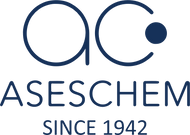
A Beginner's Guide to Setting Up a New Lab
Establishing a laboratory can be intimidating at first, but with the right plan in place, it can become an exciting and fulfilling process. From designing the space to sourcing lab equipment, Lab Chromatography, Lab Essentials, Lab Glassware’s, Lab Life Science, Lab Plastic wares, Test & Measure Instruments, Test Papers & Kits, and Standard Solutions each step contributes to creating a functional and efficient lab. Whether you're setting up a school chemistry lab, a research facility, or an industrial lab, this guide will walk you through the process.
Know the Purpose of Your Lab
Understanding the purpose of your lab is the first and most crucial step. Ask yourself:
- Will it be for experiments, advanced research, or industrial testing?
- What are the goals and specific requirements of your lab?
For example, a chemistry lab will require different equipment than a research lab focused on microscopes or sample preparation. Define your lab's objectives to tailor its setup accordingly.
Develop a Thorough Lab Setup Checklist
Creating a detailed lab setup checklist will help you stay organized and ensure everything is accounted for. Your checklist should include:
- Lab Layout Design
- Laboratory Equipment List
- Safety Gear and Protocols
- Storage Solutions
- Daily-Use Consumables
Tracking every step ensures that no critical detail is overlooked.
Design an Effective Lab Layout
Your lab layout should prioritize efficiency and safety. Consider:
- Workflows and pathways for people and materials.
- Clearly defined zones for specific tasks, such as sample preparation, equipment usage, and storage.
For instance, in a chemistry lab, you’ll need designated areas for chemical handling and access to safety equipment, such as eyewash stations and ventilation systems.
Select Appropriate Equipment and Supplies
Every lab requires a customized list of equipment based on its purpose. General items include:
- Workbenches and storage cabinets.
- Microscopes, centrifuges, and analyzers.
- Heating equipment like Bunsen burners or hot plates.
- Basic tools such as beakers, pipettes, and test tubes.
Also, prepare a consumables list for everyday items like gloves, reagents, and cleaning supplies. Don’t forget small but essential accessories like labels, markers, and clamps for smooth workflows.
Also, prepare a consumables list for gloves, reagents, and cleaning supplies. Don't forget small miscellaneous lab accessories, such as labels, markers, and clamps which are very important for smooth flows.
Source High-Quality Lab Supplies
Partnering with reliable suppliers ensures you get durable and accurate equipment. Choose vendors who specialize in laboratory goods and provide excellent customer support, especially for specialized needs or equipment repairs.
Prioritize Safety and Compliance
Safety is non-negotiable in any lab setup. Take these steps to ensure compliance:
- Install fire extinguishers, first aid kits, and proper ventilation systems.
- Train all team members in emergency protocols and the proper handling of equipment.
- Set up clear procedures for hazardous material storage and waste disposal.
Organize Your Space Efficiently
An organized lab boosts both productivity and safety. Tips for organizing your lab:
- Label shelves, drawers, and storage containers to minimize confusion.
- Store frequently used items within easy reach.
- Group similar tools or materials together.
A clutter-free lab ensures smooth operations and reduces risks.
Test Your Laboratory Setup
Before officially launching your lab, test the setup:
- Ensure all equipment is functioning properly.
- Check workflows to confirm they meet the team's requirements.
- Make necessary adjustments to improve efficiency and safety.
Conclusion
Setting up a new laboratory may seem daunting, but with careful planning and execution, it’s an achievable and rewarding process. Focus on creating a practical layout, sourcing the right supplies, and prioritizing safety. Whether you're setting up a chemistry lab or a general research facility, attention to detail is key to success.
Need help finding high-quality lab equipment? Aseschem has you covered! Get all the lab equipment you need without breaking the bank. Contact us today and take the first step toward creating your new lab!
FAQs
1 What are the essential steps to plan and set up a new lab?
Start by defining your lab's purpose and goals. Create a checklist for layout, equipment, and safety needs. Design efficient workflows, select appropriate tools, organize the space, and test the setup to ensure everything works smoothly and safely.
2 What basic equipment and tools should be included in a beginner's lab?
A beginner's lab should have workbenches, microscopes, heating tools like Bunsen burners, and basic items such as beakers and pipettes. Stock up on consumables like gloves, reagents, and cleaning supplies for daily use.
3. How do I determine the right location and layout for a laboratory?
Choose a location that supports efficient workflows and pathways. Design the layout with safety features and zones for tasks like storage, sample prep, and equipment use. Ensure access to ventilation and emergency systems.
4. What safety protocols should be established when setting up a lab?
Install fire extinguishers, first aid kits, and proper ventilation systems. Train staff on emergency protocols and equipment use, and establish clear procedures for hazardous material storage and waste disposal.
5 What are the key considerations for budgeting a new laboratory?
Plan for equipment costs, safety gear, daily-use consumables, and storage needs. Partner with reliable suppliers for quality materials at good prices. Include funds for maintenance and unexpected expenses.
Further Reading:
Papaya Enzyme Cleansing Buff Formulation
